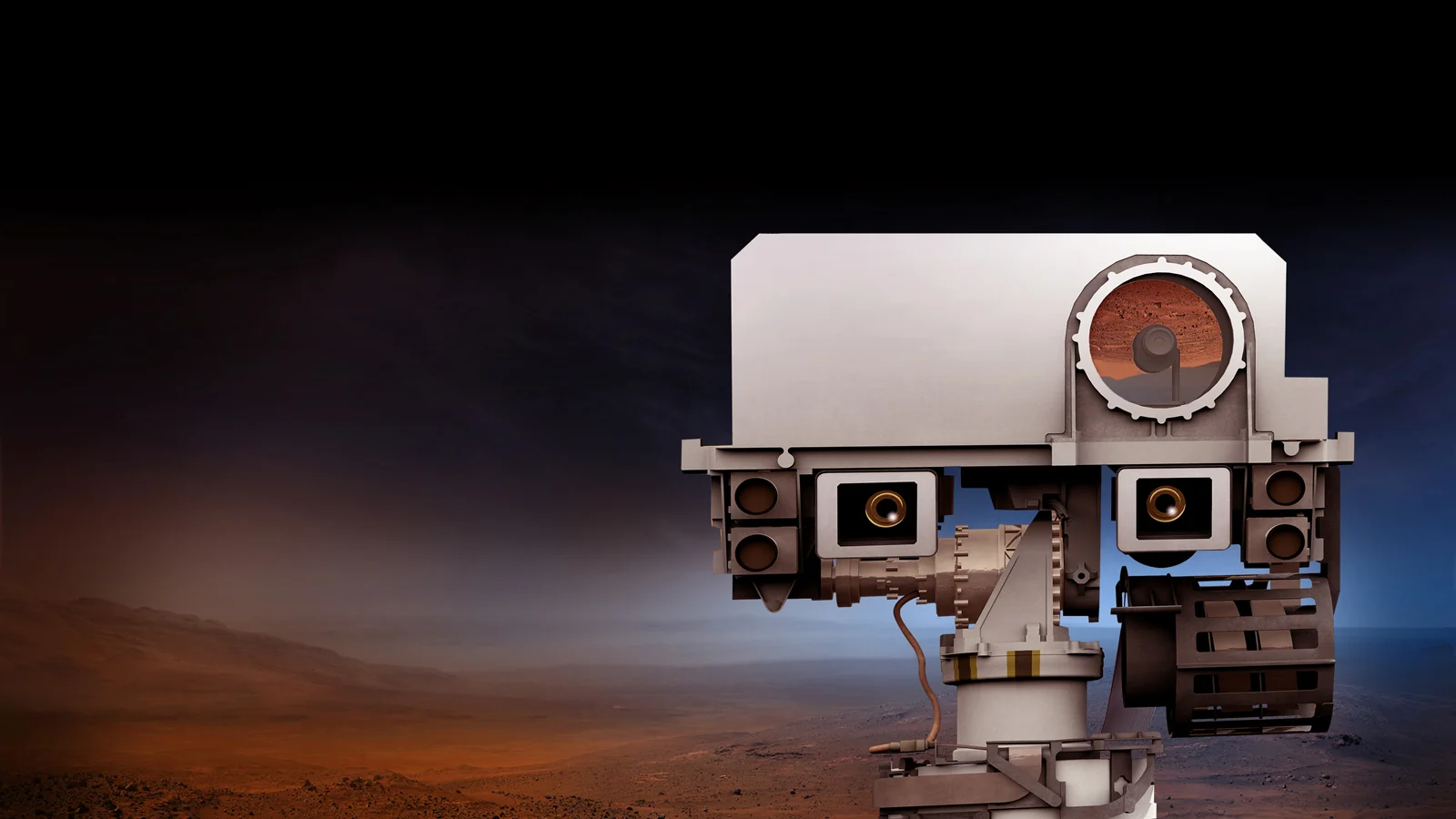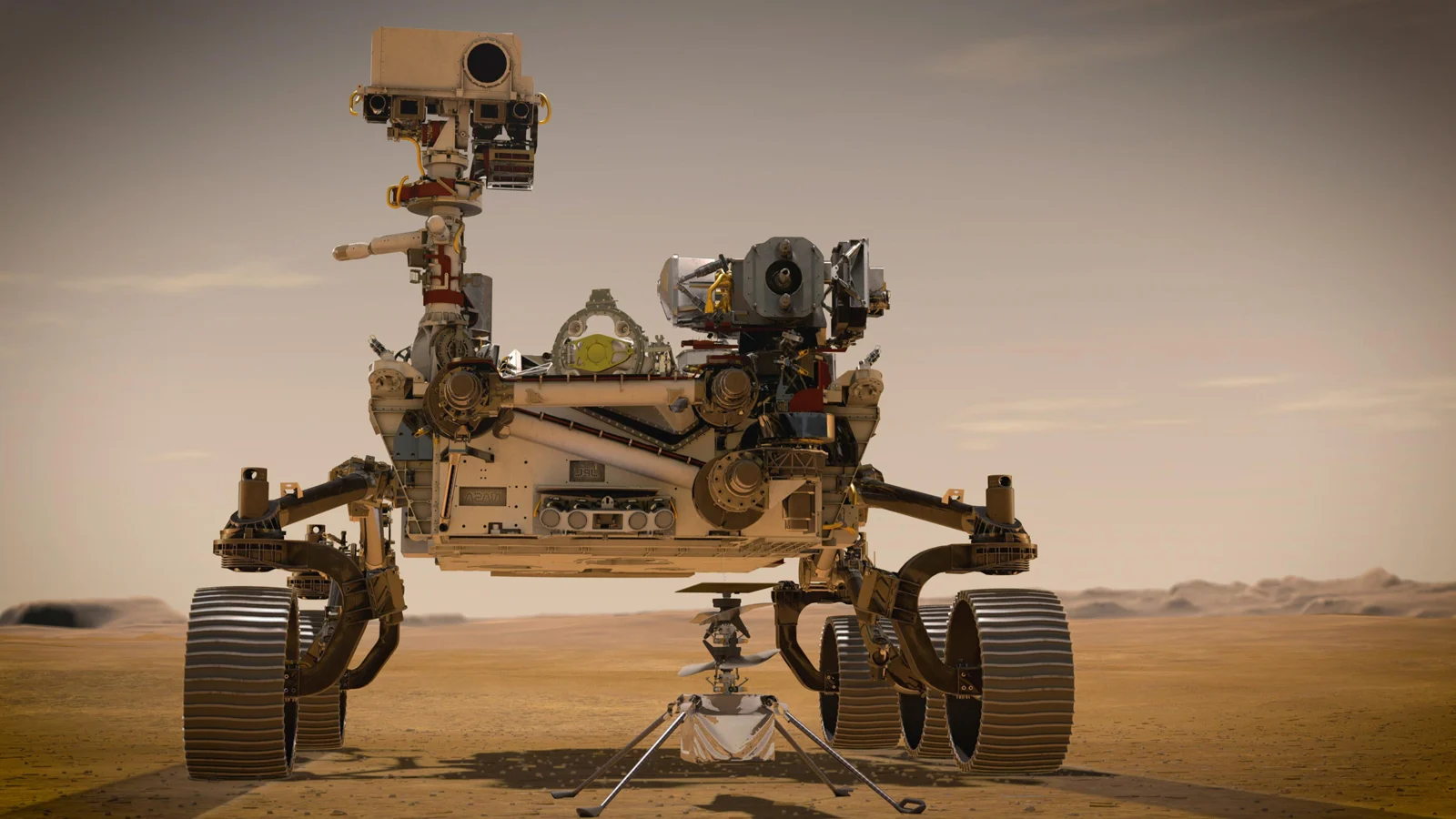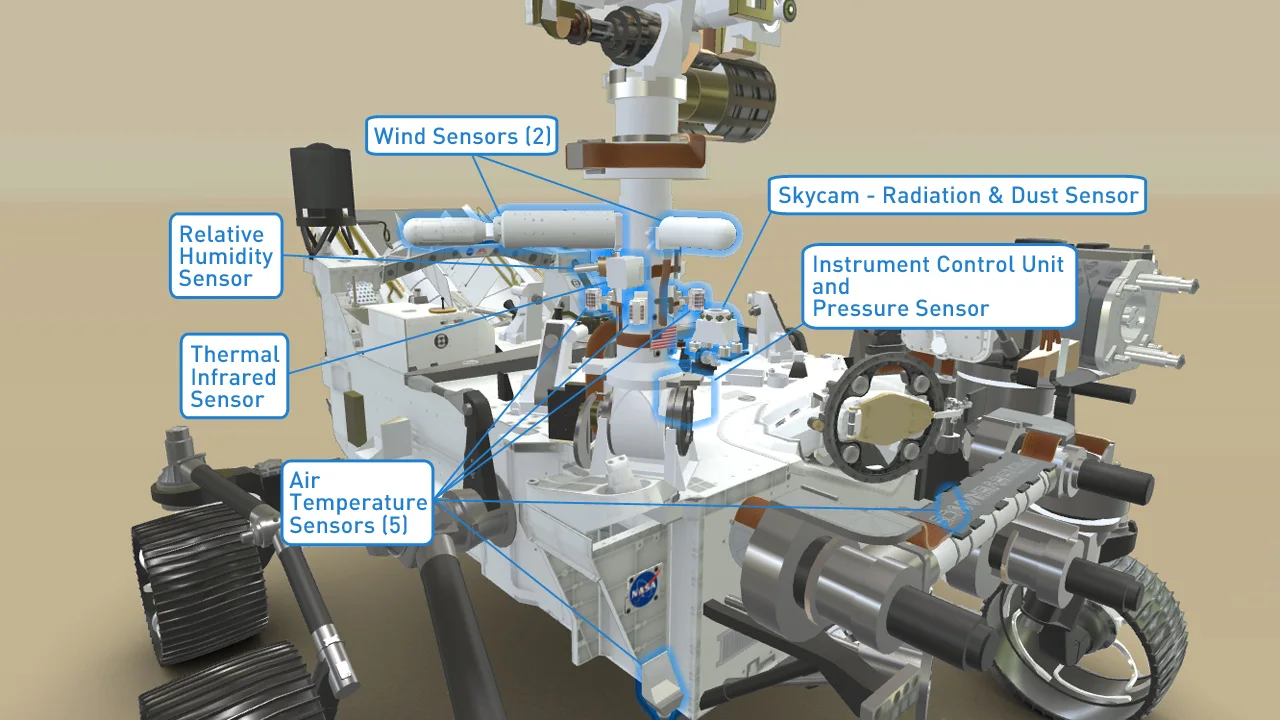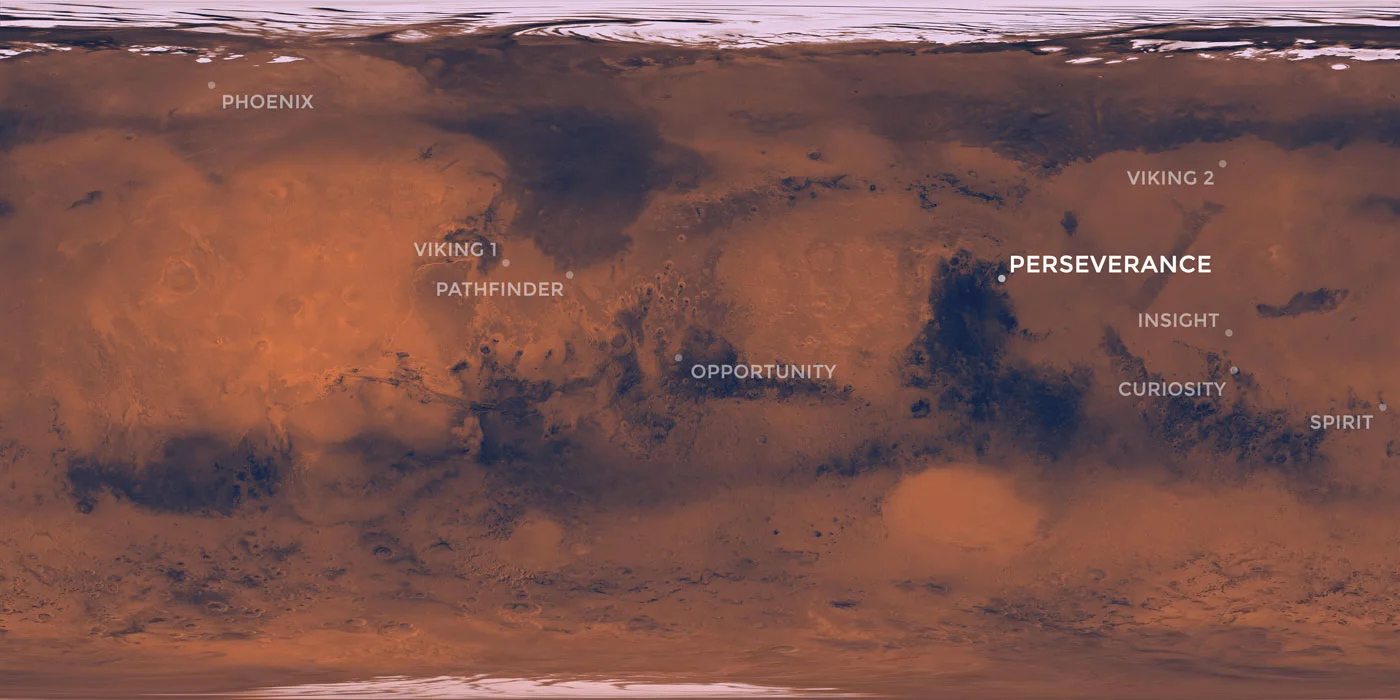
A new robot meteorologist has landed on Mars
Perseverance will help establish "the first meteorological network on another planet"
NASA's Perseverance rover reached its destination on Mars. Now it will begin sending back data on Mars' environment and atmosphere, becoming the third robotic meteorologist on the planet.
On February 18, the robotic population of Mars increased by two, as the Perseverance rover and its drone companion Ingenuity settled in and begin their preparations to explore Jezero Crater. Perseverance is equipped with an array of cameras and scientific instruments to help it complete its mission. Its primary purpose — to look for signs that the ancient river delta located in Jezero was once home to microbial life forms.

In this artist's rendition, Perseverance and Ingenuity prepare to explore their environment on Mars. Credit: NASA/JPL-Caltech
One instrument suite, in particular, is drawing interest from meteorologists and weather enthusiasts.
MEDA, or the Mars Environmental Dynamics Analyzer, is Perseverance's weather station. This array of weather instruments includes:
Two wind sensors.
Five air temperature sensors.
A relative humidity sensor.
A thermal infrared sensor.
An atmospheric pressure sensor.
The radiation and dust sensor (which includes Skycam).

Perseverance's weather instruments are highlighted and labelled in this close-up schematic. Credit: NASA/JPL-Caltech/Scott Sutherland
"MEDA will help prepare for human exploration by providing daily weather report and information on the radiation and wind patterns on Mars," said Jose Antonio Rodriguez-Manfredi, MEDA principal investigator with the Centro de Astrobiología (CAB) at the Instituto Nacional de Tecnica Aeroespacial in Madrid, Spain, according to NASA.
MEDA isn't the first meteorological station on the surface of Mars. So far, six NASA missions have landed there that included weather instruments. Vikings 1 and 2 had identical weather stations mounted on an extended boom. Pathfinder had the Atmospheric Structure Instrument/Meteorology Package (ASI/MET). Phoenix had the Meteorological Station (MET), built by the Canadian Space Agency. Curiosity has the Rover Environmental Monitoring System (REMS). The InSight lander has the Temperature and Wind for InSight (TWINS) instrument, as well as an air pressure sensor in its Auxiliary Payload Sensor Suite (APSS). Of these robots, only Curiosity and InSight are still operating and sending back data.
When Perseverance brings MEDA online fully online, it will be the first time we'll have a total of three meteorological stations active on the surface of Mars simultaneously.
According to Rodriguez-Manfredi the three working together will form "the first meteorological network on another planet."
While scientists are already running daily weather models for Mars, MEDA's additional data will allow even better weather prediction capability. It will be fascinating to track specific weather patterns (fronts?) as they pass by the meteorological stations carried by these three robots.

NASA mission locations are noted on this map of Mars. On a planetary scale, Curiosity, InSight, and Perseverance are all relatively close together. Credit: NASA/JPL-Caltech
With the addition of the Radiation and Dust Sensor, Perseverance's meteorological station will be the first to measure the amount, shape, and size of dust particles in Mars' atmosphere. Other missions have captured many images of Martian dust, and most recently, the Opportunity rover ended its mission due to an intense global dust storm. None have been able to measure the dust as this mission will. The data collected by this sensor will help engineers and scientists plan for long-duration human missions to the surface, which will have to deal with this dust on a daily basis.
"Understanding Martian dust is very important for this mission," Rodriguez-Manfredi said in a NASA statement. "Those fine grains of dust lift off the surface and cover the entire planet. We don't know how Martian winds and changes in temperature are able to cause those global dust storms, but this will be important information for future missions."
Skycam will also image clouds in the sky above Perseverance. This will add another weather parameter to help predict Mars weather — important not only for scientific research but also for determining if conditions are safe for Ingenuity to fly. Additionally, Skycam will determine how those clouds affect incoming solar radiation, which will help when designing suits that will protect the first human Mars explorers from the hazards of the environment.






